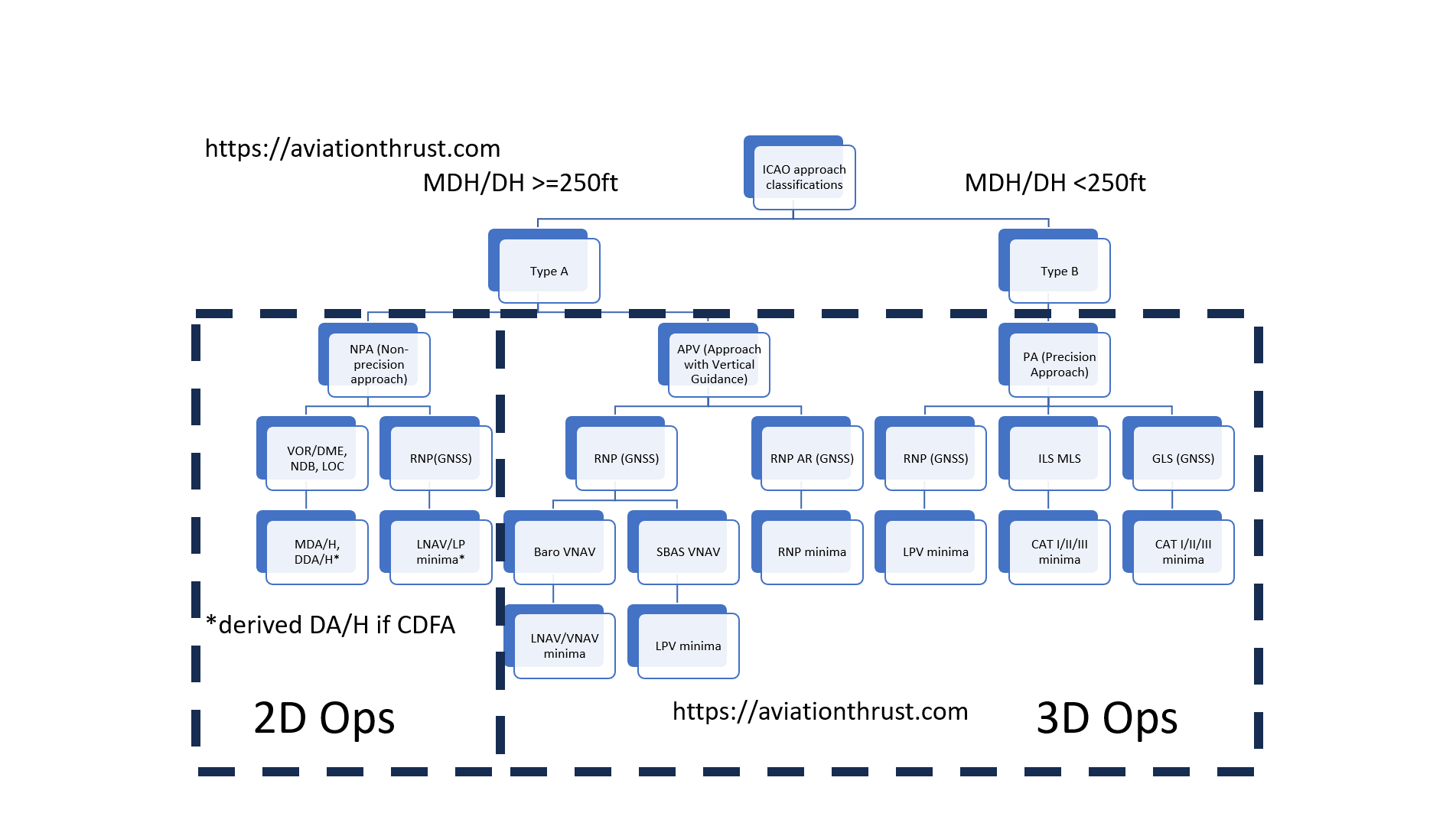Are you updated with latest categorization of approaches as Type A and Type B? If not, this post is for you. With advancement of PBN, many new technologies and techniques have been developed. Too many new terms have been introduced and its time to restructure everything for clear understanding.
ICAO Annex 6 has introduced a fresh approach by categorizing approaches into two distinct types:
Type A: Features a minimum descent height or decision height at or above 75 m (250 ft).
Type B: Offers a decision height below 75 m (250 ft)
Key Points:
- This classification, independent of technology, provides clarity and simplifies approach terminology.
- ICAO has clearly delineated approach design and operations.
- For operations, procedures are split into “2D” and “3D” procedures based on available guidance.
The introduction of the term “Approach with Vertical Guidance” (APV) has been a source of confusion in the past. Driven by PBN advancements, APV didn’t encompass traditional ILS, despite the latter also providing vertical guidance. In essence, the evolution of approach classifications and terminology reflects the ongoing advancements in aviation technology and the need for precision and clarity in operational procedures.
With ever-evolving landscape of aviation procedures, the shift towards performance-based navigation (PBN) is unmistakable. The European Commission presently mandates the exclusive use of Performance-Based Navigation (PBN) for procedure definition by Air Navigation Service Providers (ANSPs), except for CAT 2/3 approaches, effective from June 6, 2030. At present, no such guidelines have been issued by ICAO but something similar might be expected in coming years.
Refer the image below for better understanding of Type A and Type B approaches.

Type A and Type B – Pilots’ point of view
If you are flying, all that matter for you is correct vertical and lateral guidance. Most of the modern aircrafts allow non-precision approaches to be flown as CDFA technique and using a pilot derived decision height/altitude. These approaches are still counted as 2D by ICAO. You can bookmark this page for quick reference.
ICAO annex 6 contains a very specific note on this subject:
“Non-precision approach procedures may be flown using a continuous descent final approach (CDFA) technique. CDFAs with advisory VNAV guidance calculated by on-board equipment (see PANS-OPS (Doc 8168),Volume I, Part I, Section 4, Chapter 1, 1.8.1) are considered 3D instrument approach operations. CDFAs with manual calculation of the required rate of descent are considered 2D instrument approach operations.”